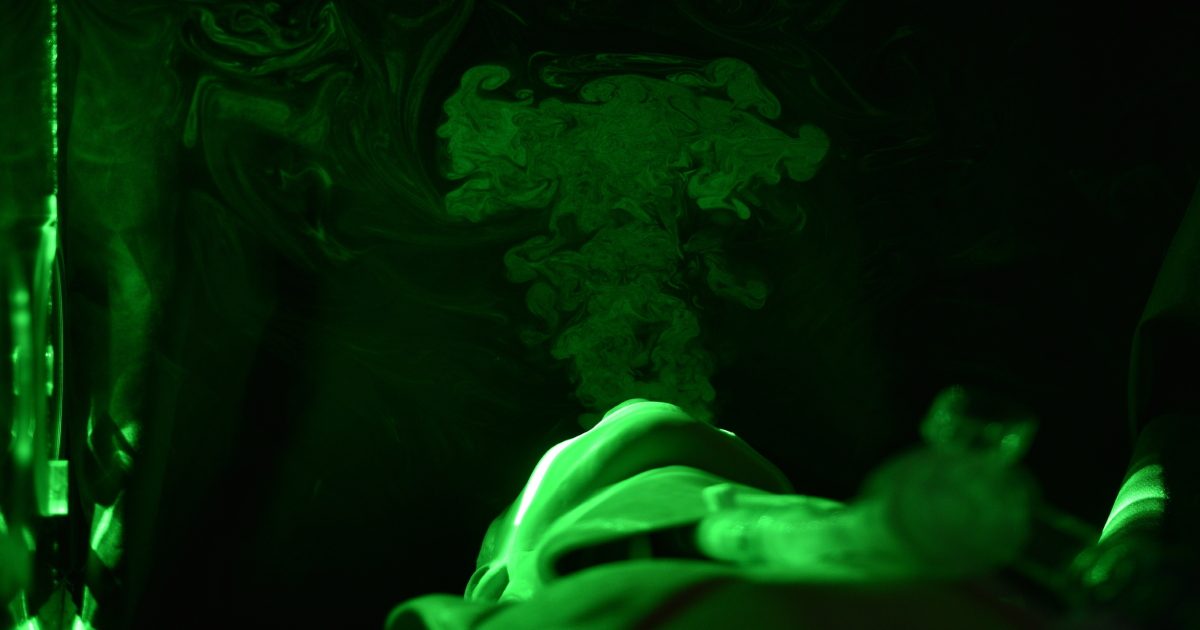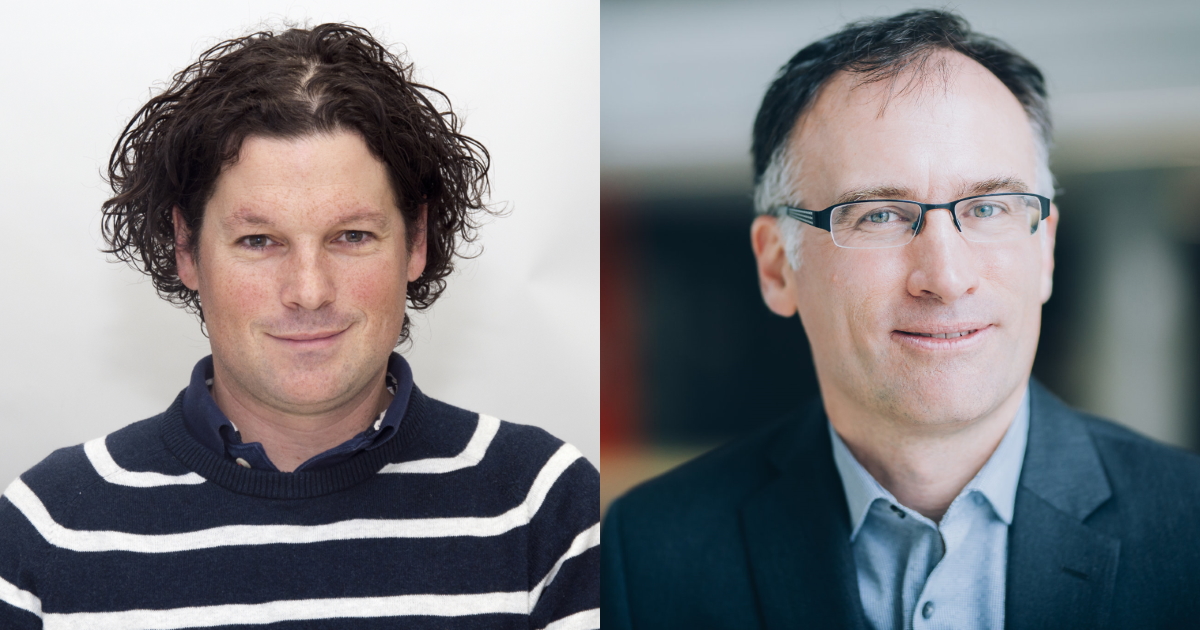Nouvelles
Examining aerosol movement in order to better protect health care personnel
Over the past few weeks, Québec’s dentists, ophtalmologists, and oto-rhino-laryngologists have reopened their clinic doors. Yet how much risk are they subject to, given the realities of COVID-19? A Polytechnique professor is delving into the question and seeking to offer solutions.

Professor Étienne Robert’s team is conducting experiments with artificially-generated aerosols to visualize the movement of fluids in aerosol containment enclosures.
For most trades and professions, maintaining the required two-metres of physical distance with colleagues and clients is feasible. Yet for others, physical distancing is impossible – which is certainly the case with health care professionals. Dental hygienists and dentists are at the top of the list when it comes to needing to find a way to deal with the aerosols and sprays produced by their professional equipment.
A group of health care professionals approached Polytechnique Montréal’s Professor Étienne Robert (Department of Mechanical Engineering), asking him to research the risk level related to each procedure, and most importantly, how to reduce it.
Professor Robert is a specialist in fluid mechanics, and in recent years has developed expertise in the observation and dispersion of aerosols – the latter being largely composed of water, and therefore susceptible to transporting pathogens such as SARS-CoV-2 once suspended in the air.
Professor Étienne Robert intends to use expertise he’s developed over the course of his career in combination with new approaches, to protect those who must work in close proximity to a patient’s face.

From left to right: Professor Étienne Robert, Department of Mechanical Engineering; Professor Carl-Éric Aubin, Department of Mechanical Engineering; Chief Executive and Scientific Officer of TransMedTech Institute.
Lasers: lighting and leading the way
Professor Robert and his team of researchers will begin their deep dive into the aerosol exposure question by measuring the size of aerosol droplets that health care workers are exposed to when caring for patients.
At the same time, the team will also test the effectiveness of a protective polymethyl methacrylate (known under the brand name “Plexiglass”) enclosure. The later enclosure is positioned around the patient’s head, and theoretically limits aerosol dispersion.
The research team will conduct their experiments using a particle spectrometer, a tool which measures the concentration and size distribution of artificially-generated aerosol in an experimental system, or the above factors when aerosols are produced during clinical interventions.
“The advantage of this approach is that it’s easy to use. However, it doesn’t determine the size of a droplet that has just been produced - because the characteristics of water-based aerosols can change very quickly between the time they’re produced and when they’re detected,” explains Étienne Robert.
In order to face this particular problem, the Polytechnique Montréal-based team will fine-tune optical characterization systems so as to measure the size and behaviour of aerosols generated and expelled near a patient’s mouth. It’s a complex task, Professor Robert notes: “A droplet can dissipate in less than a second when the air isn’t saturated with humidity,” offers Professor Robert. As a result, the team intends to use mathematical extrapolations to determine aerosols’ physical characteristics, once emitted by an individual’s mouth - and the team will do this while maintaining a safe distance, of course.
Professor Robert notes that the experiment’s data won’t necessarily establish the level of virus transmission risk that health care workers are exposed to, and as a result, he plans on combining microbiological studies to his work.
Two interns and a Master’s level student will work on the experiment this summer, with the team hoping to produce its first results this Autumn.

Three students supervised by Professor Étienne Robert will help research the question of whether or not the Splashguard enclosure effectively halts aerosol dispersion. In this photo is an enclosure intended for use in pediatrics, with a mannequin in place of a real patient to simulate non-invasive ventilation procedures.
Support from TransMedtech Institute
Professor Étienne Robert and his team received a $39,250 research grant from the TransMedTech Institute. TransMedTech plays a key role when it comes to discovering and funding research innovation; based on a “living lab” approach, it provides an integrated environment that supports interdisciplinary collaborative processes and the co-creation of new biomedical technologies and interventions, in order to catalyze development and adoption by users.
The Institute once again lived up to its mandate in recent weeks with developmental support for the Splashguard-CG, a PMMA enclosure that protects health care personnel that must care for patients who have COVID-19 and are receiving non-invasive ventilation. From its initial design to its manufacture, including simulations and verification tests, clinical experts and other mechanical engineering specialists contributed to the project.
Étienne Robert was a part of the above project, and used his aerosol tracking expertise to verify the enclosure’s watertightness. “The Splashguard is placed on a patient’s bed, or on a patient wearing a positive pressure mask. There is always the possibility of leaks between the mask interface and the face itself, but with this enclosure, health care personnel are well protected,” explains Robert.
Polytechnique Montréal Professor Carl-Éric Aubin, (who teaches biomedical engineering) and TransMedTech Institute’s Chief Executive and Scientific Officer, was also part of the SplashGuard design process. Aubin will continue to work on the project along with two interns, fine-tuning it to better serve uses in various clinical realities, such as dental medicine, ophthalmology and oto-rhino-laryngology. Clinical trials will soon start at Montréal’s Hôpital Maisonneuve-Rosemont.
Learn more
Professor Étienne Robert’s expertise
Professor Carl-Éric Aubin’s expertise
Mechanical Engineering website
TransMedTech Institute website




